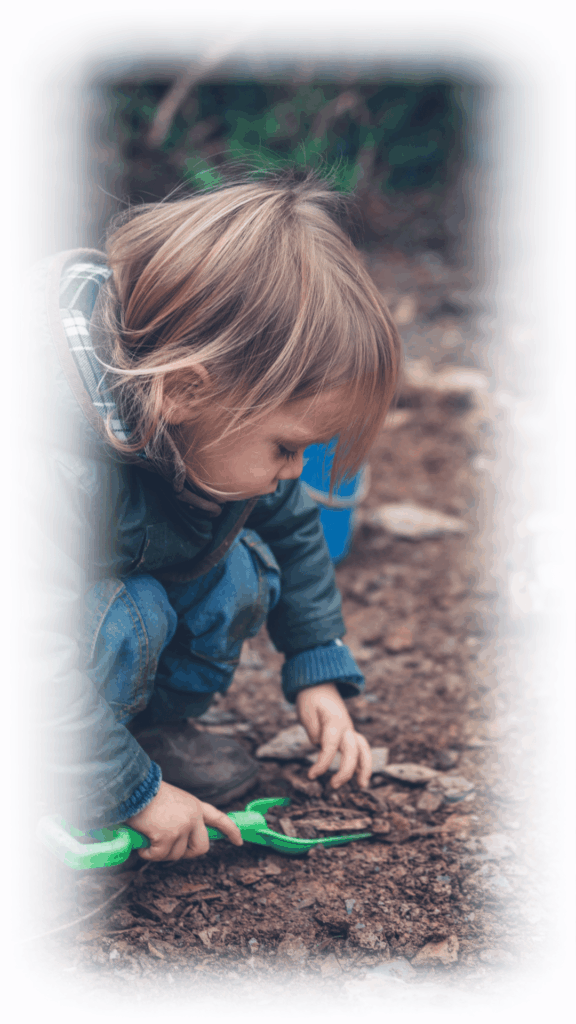The Healer’s Journey: Why Inner Child Work Matters
Recently, I had a therapist come to me for inner child work and inner child healing using hypnotherapy. I find that therapists, doctors, or healthcare professionals – really, those in the healing space – often seek out this work themselves. And I understand why, because I too continue to do my own healing work. I myself have done much work, and I feel that to be a person in this space healing others, I too must be healed. That is not to say, candidly, that I am totally healed – I don’t believe there is such a moment in life that we are “perfect.” There is much nuance in that statement.
We live in a dual world with duality, with positives and negatives, where there is much separation in this place. That duality also relates to us as humans. I believe there are always many parts within me. I have discussed this concept in depth in my article about Parts Work in Hypnotherapy, but to understand that there is separation in us, these parts are nothing more than ego aspects. Ego is also defined as separation. To function in this world, we need an ego. Ego is not bad – it just is.
I have also talked about this in another article where I explain Regression Therapy. But if I would simply say the challenge in healing or being totally whole in one word, it would be “integration.” Integration simply means to bring together. And with that idea, there is always an inner child within.
Understanding Your Inner Child Through Hypnotherapy
My inner child is always there. She has a characteristic to her, a vibration, an energy to her. She is soft, tender, loves playing in nature, dancing, being with animals, observing things with a wonderment on how it works. She is not loud – she is quiet and shy but furiously curious. She loves to go on adventures, especially in nature, wonder for hours and even get lost.
Now if she is there, so are her past hurts. Although I have re-parented her in a sense, she is still there and tender and can feel unsafe in situations. The main difference is she has an adult part that knows this, that never leaves her and can recognize when she’s feeling vulnerable and provide the safety and reassurance she needs.
Your inner child is the same – they carry both the wonder and the wounds of your early years. They hold your capacity for joy, creativity, and pure authentic expression, but they also carry the fear, pain, and unmet needs from childhood experiences.
What is Inner Child Work and is it “Real”?
Recently, I had someone ask me, “Is this inner child stuff real?” My answer to him: I can’t really prove if it is real per se, but it is a framework that works. It’s a framework that we can make sense of and even see the results of following. The framework may feel awkward at first or even ridiculous to maybe an adult part that says, “It is time to grow up and just get over it.”
To me, I believe for this person, it was clear they were disconnected from that inner child part. And that disconnection is precisely what creates many of the struggles we face as adults.
The inner child is not just a therapeutic concept or metaphor – it’s a lived experience within your psyche. It’s the part of you that still carries the emotional imprints, beliefs, and wounds from your early years. Whether you view it as literally “real” or as a useful psychological framework doesn’t matter as much as recognizing that working with this part of yourself creates tangible, lasting healing.
What Is the Inner Child?
The inner child for all of us is curious, pure, and it is your child self – that free and non-adaptive part of you that just wants to play, feel good, and experience life with wonder. However, most of us don’t get to keep that free, natural inner child. Instead, we develop what I call an “adaptive inner child.”
This adaptive version forms because as children, we didn’t know how to deal with big feelings and emotions. We didn’t know how to accept ourselves fully or how to get our needs met in healthy ways. So our inner child adapted themselves to “fit in” – to be acceptable, to stay safe, to earn love and belonging. This adaptation meant suppressing parts of ourselves, hiding our true feelings, and becoming who we thought we needed to be rather than who we naturally were.
This is the re-parenting we need to do – to help our inner child feel free to be true, natural, and whole again. To give them permission to express themselves without fear of rejection or punishment. When we do this re-parenting work through Fort Lauderdale hypnotherapy treatment, we can incorporate or integrate the beauties of a free inner child part back into our lives.
Play doesn’t need to look the same for you as it would for a kid playing on monkey bars. Play may be taking a walk, doing something creative like art, or even building something with your hands. Or maybe it is as simple as laughing with friends or lounging on a beach.

The inner child comes out when we need to create, when we need to just breathe and stare at the world in wonderment the way any child does seeing something new for the first time. It’s that part of you that:
- Feels things deeply and authentically
- Approaches life with curiosity and openness
- Seeks connection, safety, and love
- Holds your core sense of self before the world told you who to be
- Contains your natural creativity and spontaneity
- Carries both your joy and your pain
When this part feels safe and seen, you experience more aliveness, creativity, and authentic connection. When this part feels wounded or abandoned, you may experience anxiety, depression, difficulty trusting, or a sense of emptiness that nothing seems to fill.
The Challenge: Integration and Remembering
Going back to my idea of integration – we forget this part. And so much of healing is very much remembering all the parts of us that are naturally separated because of this dense existence we are all in, this place we call reality, this place we call Earth, or this plane where we have to feel pain to feel pleasure, where we can’t have one without the other.
This forgetting happens naturally as we grow up. We learn to suppress our emotions, to ignore our needs, to adapt to what others expect of us. We develop protective parts and coping mechanisms that, while helpful for survival, distance us from our authentic core. We become so focused on functioning, achieving, and managing external demands that we lose touch with the tender, vulnerable, joyful part within.
The separation from our inner child creates a fragmentation within us. We might feel like we’re going through the motions of life without really feeling alive. We might struggle with:
- Difficulty experiencing joy or pleasure
- Chronic feelings of emptiness or disconnection
- Perfectionism or harsh self-criticism
- Inability to relax or play
- Challenges in intimate relationships
- Unexplained anxiety or depression
- Feeling like something is missing, even when life looks good on paper
The Evolution Through Awareness
This is the progression, the evolution of our species, I believe – to overcome and recognize. And what happens in the end, the true healing, is awareness. Awareness that gets bigger and bigger. And that trauma or that memory or that hurt part just holds less space, and it is so much easier to manage.
Healing doesn’t mean the hurt never happened or that the memories disappear. It means expanding your awareness so that those wounded parts no longer control your entire experience. It means developing the capacity to hold both the pain and the joy, the child and the adult, the vulnerability and the strength.
When you become aware of your inner child’s fears, needs, and desires, you stop unconsciously reacting from those old wounds. Instead, you can consciously respond with the wisdom, resources, and compassion you now possess as an adult.
How Hypnotherapy Facilitates Inner Child Healing
So coming back to hypnotherapy – the thing that I have found in this whole healing and integration process is the power of becoming more aware. Aware of parts of you, aware of the thinking mind, aware of the subconscious mind, aware of the patterns that run automatically below your conscious awareness.
Hypnotherapy creates the ideal environment for inner child work because it allows you to bypass the analytical, critical adult mind and access the deeper emotional and symbolic realm where your inner child resides. In a gentle trance state, you can:
Connect Directly with Your Inner Child: In hypnosis, you can actually visualize, sense, or feel your younger self. Many people describe seeing themselves at a specific age, feeling the emotions they felt back then, or hearing the thoughts their child self had. This isn’t just imagination – it’s accessing real emotional memories and patterns stored in your subconscious mind.
Understand Their Perspective: From the relaxed, open state of hypnosis, you can understand what your inner child needed but didn’t receive. You can see the situations from their perspective and recognize how certain experiences shaped your beliefs about yourself, others, and the world.
Provide What Was Missing: This is where the profound healing happens. Through hypnotic inner child work, your adult self can go back and provide what your child self needed – comfort, protection, validation, love, safety. You can literally re-parent yourself, giving your inner child the experience of being seen, heard, and cared for.
Rewrite the Emotional Story: While you can’t change what actually happened, you can change the emotional meaning and impact of those experiences. Through hypnotherapy, you can help your inner child understand that they are now safe, that what happened wasn’t their fault, and that they are worthy of love and belonging.
Integrate the Parts: Ultimately, inner child work through hypnotherapy helps you integrate this younger part back into your whole self. Instead of the inner child being a wounded, hidden part that acts out unconsciously, they become a valued, integrated aspect of your personality that you can care for consciously.

Hypnosis is a very natural calm relaxed and focused state that can be achieved easily, you are in full control and aware of everything that is happening
The Process of Inner Child Healing in Hypnotherapy
When I work with someone on inner child healing through hypnotherapy, we typically move through several stages:
Stage 1: Awareness and Recognition First, we help you become aware that there is an inner child within you. We explore what age they might be, what they look like, what they’re feeling. Sometimes people are surprised to find multiple inner child parts at different ages, each holding different experiences and emotions.
Stage 2: Understanding and Witnessing Next, we work to understand what your inner child experienced and what they needed. This isn’t about reliving trauma or getting lost in painful memories – it’s about witnessing and acknowledging what happened with compassion. As I discussed in my article on Regression Therapy, sometimes we need to go back to specific memories to fully understand the origins of current struggles.
Stage 3: Meeting Needs and Re-parenting This is where the healing truly begins. Your adult self, with all your current resources, wisdom, and strength, can provide for your inner child what they didn’t receive back then. You might hold them, speak loving words to them, protect them from harm, or simply sit with them in their pain without trying to fix or change it.
I cannot express in works how palpable and transformative this experience is until you actually go through it. It’s one thing to read about it or conceptualize it intellectually – it’s entirely another to actually feel your adult self embracing your wounded child self and witnessing the profound shift that happens in that moment. It is not only healing for you, but a wave of energy usually goes through the room that even reminds me to trust this framework and how it really works. I feel it every time, and it reaffirms the power of this work.
Stage 4: Integration and Ongoing Relationship The final stage involves integrating this part back into your daily life. Your inner child doesn’t go away – they become a vibrant, healthy part of your whole self. You develop an ongoing relationship with this part, checking in with them, listening to their needs, and allowing them appropriate expression in your life.
As I mentioned in my article about Parts Work, we all have multiple internal parts that developed to help us navigate life. The inner child is often one of the most important parts to understand and heal because they hold the core emotional experiences that shaped all your other parts.
For instance, if your inner child learned that expressing emotions led to punishment or abandonment, you may have developed a “people-pleaser” part to ensure you never upset anyone. You may have created a “controller” part that tries to manage every situation to avoid feeling vulnerable. You may have built a “numb” part that shuts down emotions entirely.
All these protective parts developed to keep your vulnerable inner child safe. But when the inner child remains wounded and unhealed, these protective parts continue operating even when they’re no longer necessary, creating the conflicts and struggles I described in the parts work article.
By healing your inner child through hypnotherapy, you address the root cause that created many of your protective parts. As your inner child feels safer and more integrated, your protective parts can relax, update their strategies, and work in healthier, more flexible ways.
Real-Life Transformation: Sarah’s Story
Let me share a powerful example of inner child healing through hypnotherapy. A client who we will call Sarah came to me struggling with chronic anxiety and an inability to set boundaries in relationships. She described feeling like she constantly had to anticipate others’ needs and make sure everyone around her was happy, even at great cost to herself.
During our hypnotherapy session, we connected with her inner child – a little girl around five years old. This child was terrified and hypervigilant, constantly scanning her environment for signs of danger. As we explored gently, Sarah remembered (or rather, her inner child showed us) that her mother struggled with severe mood swings. Young Sarah never knew if she would come home to a loving mother or an angry, unpredictable one.
Her inner child learned that her survival depended on reading her mother’s moods and adjusting her behavior accordingly. She had to be perfect, quiet, and anticipate needs before they were even expressed. This created a constant state of hypervigilance and anxiety.
Through our hypnotherapy work, adult Sarah was able to go back and meet this frightened little girl. She held her, told her that it wasn’t her job to manage her mother’s emotions, that she was safe now, and that she could just be a child. We worked over several sessions to help this inner child understand that adult Sarah could now protect her and that she didn’t need to be hypervigilant anymore.
The transformation was remarkable. Sarah’s chronic anxiety significantly decreased. She began setting boundaries in her relationships without overwhelming guilt. She started asking for what she needed instead of always anticipating others’ needs. Her inner child, once terrified and burdened with inappropriate responsibility, became a joyful, playful part of her that could actually enjoy life.
Practical Ways to Connect with Your Inner Child
While deep healing often requires working with a trained therapist, there are ways you can begin connecting with your inner child on your own. I’ve created a free guided inner child meditation on Insight Timer that can help you start this journey.
In this meditation, I guide you to create space to simply listen to your inner child. The practice involves gentle questions that help you tune into this part of yourself. After the meditation, I encourage you to journal any insights, feelings, or messages that came up during the practice. Sometimes your inner child has been waiting a long time to be heard, and simply creating that quiet space to listen can be profoundly healing.
The questions in the meditation help you:
- Connect with what your inner child is feeling right now
- Understand what they need from you
- Recognize where they might be hurting or afraid
- Discover what brings them joy and makes them feel safe
This journaling practice after the meditation allows you to capture the wisdom and insights that emerge when you give your inner child permission to speak. You might be surprised by what comes through when you create this intentional space for connection.

The Ongoing Journey of Integration
Healing your inner child isn’t a one-time event or a box to check off. It’s an ongoing relationship and practice of integration. There will be times when your inner child feels safe, joyful, and free. There will be other times when they feel scared, hurt, or alone – and that’s okay.
The goal isn’t to never have your inner child feel pain again. The goal is to develop awareness so that when they do feel pain, you can recognize it, understand it, and respond with the love and care they need. You become the good parent to yourself that perhaps you didn’t always have.
This practice of integration – bringing all parts of yourself together into a cohesive whole – is what allows you to live more authentically, love more deeply, and experience more joy and aliveness in your daily life.
Why This Work Matters
Inner child healing through hypnotherapy sessions in Fort Lauderdale matters because so many of us are walking around with wounded children living inside us, unconsciously driving our choices, relationships, and emotional responses. We wonder why we can’t seem to change certain patterns, why we keep attracting the same types of relationships, or why we feel anxious or empty despite having everything we thought we wanted.
The answer often lies in these unhealed, unintegrated parts of ourselves. And while the journey of healing can feel vulnerable and uncomfortable at times, the freedom and wholeness on the other side are worth every step.
When you heal your inner child, you don’t just heal your past – you transform your present and future. You break generational patterns. You develop the capacity for deeper, more authentic relationships. You access more creativity, joy, and spontaneity. You finally feel at home in yourself.
Taking the First Step
If any of this resonates with you and if you recognize that there’s a wounded child within who needs attention, love, and healing then I encourage you to explore inner child work through hypnotherapy. This work requires courage because it asks you to look at painful experiences and feel difficult emotions. But it also offers the profound reward of coming home to yourself, of finally integrating all the parts of you into a whole, authentic, vibrant human being.
Remember, healing is not about reaching some perfect state where you never feel pain or struggle. It’s about expanding your awareness and capacity so that you can hold all of your experiences the joy and the pain, the strength and the vulnerability, the adult and the child – with compassion, wisdom, and love.
Your inner child has been waiting for you to come back for them. They’ve been holding space, carrying wounds, and trying to get your attention through symptoms, patterns, and struggles. The beautiful news is that it’s never too late to answer that call, to turn toward them with love, and to begin the journey of integration and wholeness.
For more common questions see below.

Is this process only for people with childhood trauma, or can anyone benefit?
While people with difficult childhood experiences often feel the benefits deeply, inner child work isn’t limited to trauma survivors though. Many people that I have worked with have small events happen that their adult and conscious mind may not give much significants to. Anyone who wants to have increased self-awareness, more authentic expression, the ability to play, feel joy, or break repetitive emotional patterns can benefit from this. Most adults carry some form of inner child imprint that affects how they relate to themselves and others.
What exactly is inner child work, and how does hypnotherapy help me connect with the inner child I’ve forgotten about?
Inner child work is a healing practice focused on reconnecting with the vulnerable, emotional part of yourself that carries experiences, needs, and beliefs from early life. In hypnotherapy, a relaxed, trance-like state allows you to bypass your analytical adult mind and access emotions and memories stored in the subconscious. From this space, you can see, feel, or interact with your inner child, understand their experiences, and provide them with the love and reassurance they needed back then which leads to deeper healing and integration.
Is inner child work “real,” or is it just a metaphor?
Many people wonder if this is a valid psychological process or merely symbolic. According to practitioners, the inner child concept functions as a framework to understand emotional imprints from childhood, and while you can’t always “prove it” scientifically like a blood test, it produces real emotional and behavioral change for people who experience relief, increased self-awareness, and improved emotional regulation after doing the work.
What are some signs that my inner child might need healing even if I don’t remember specific childhood events?
Even without clear memories, unmet emotional needs often show up as: chronic self-criticism, difficulty experiencing joy, anxiety, people-pleasing patterns, perfectionism, trouble in relationships, or feeling “something is missing” despite external success. These patterns often stem from adaptations your inner child formed in response to early environments and hypnotherapy helps uncover and soothe those unspoken needs.
What does a hypnotherapy session for inner child healing look like step by step?
Healing usually happens in stages: first awareness recognizing your inner child and their feelings; then understanding and witnessing seeing what they experienced; next re-parenting giving them what they needed in a safe, adult-guided way; and finally integration building an ongoing relationship with that part so it enriches rather than disrupts your life. Some clients report sensing a specific age or emotion from their inner child while in a trance state.
Can inner child hypnotherapy help with things like anxiety, relationships, or self-esteem?
Yes, because unhealed inner child wounds often drive unconscious patterns that show up as emotional triggers, self-sabotage, and relational difficulties. When hypnotherapy helps you address these root causes in the subconscious, it can promote emotional resilience, improve self-worth, and reduce anxiety by shifting how your nervous system responds to familiar triggers.
Is hypnotherapy safe, and will I lose control during the session?
Hypnotherapy is generally considered safe when guided by a trained professional. Contrary to myths, you don’t lose control or become “unconscious” you enter a deeply relaxed but aware state where your mind becomes open to reflection and emotional insight without giving up decision-making authority. This state simply helps bypass the critical thinking mind to access deeper memories and feelings.
How long does it take to see results from inner child hypnotherapy?
Results vary based on individual history and responsiveness, but many people notice emotional shifts even after a few sessions. Long-term healing is a process and a “one hit wonder” type of thing. The integration continues as you consciously apply new awareness and compassion for your inner child in your daily life. Regular follow-ups or journaling can help deepen the benefits over time.






